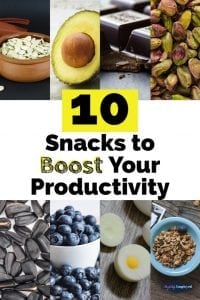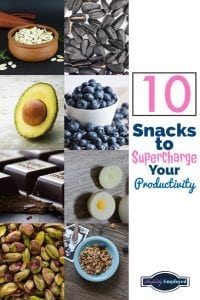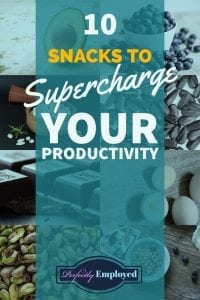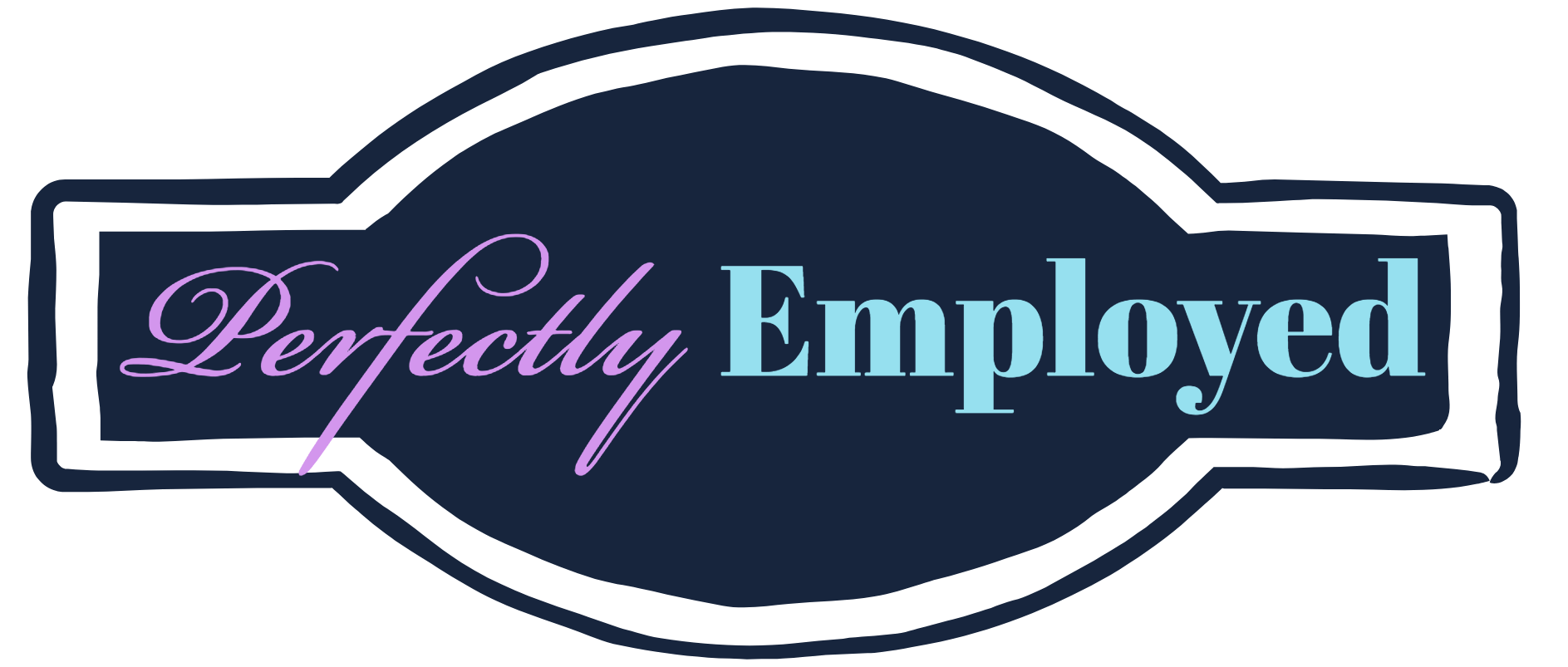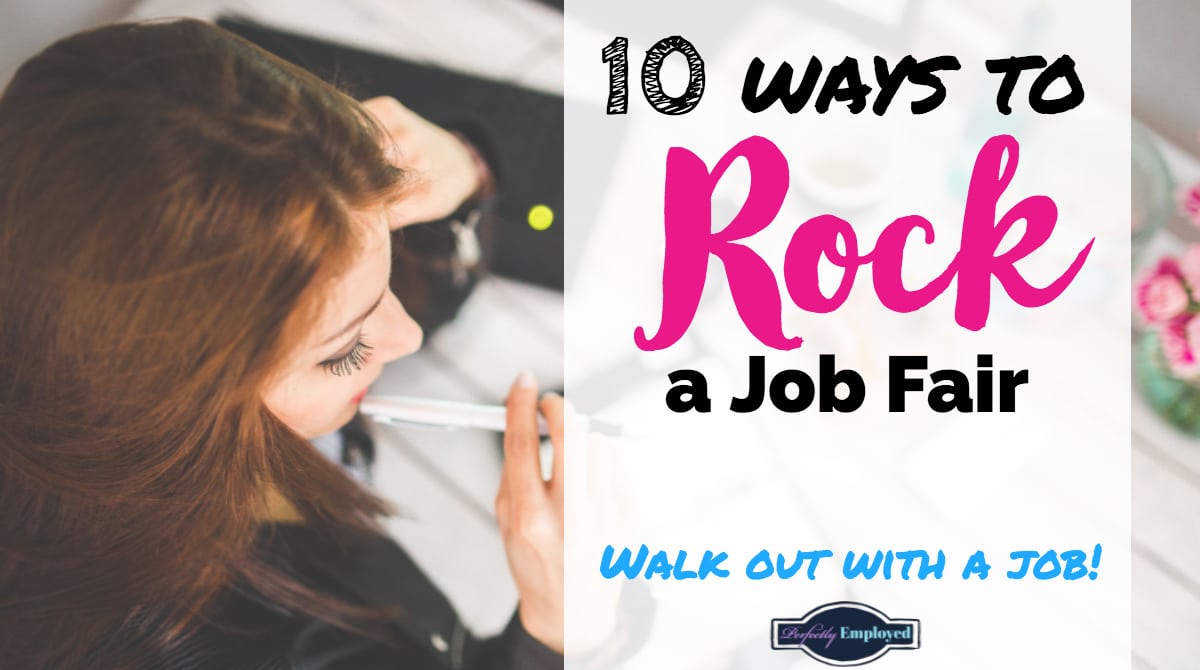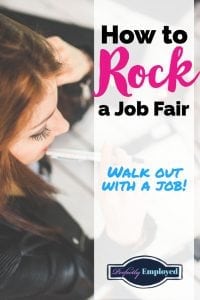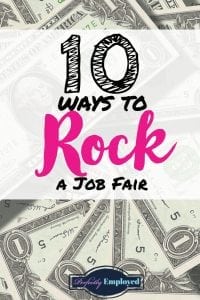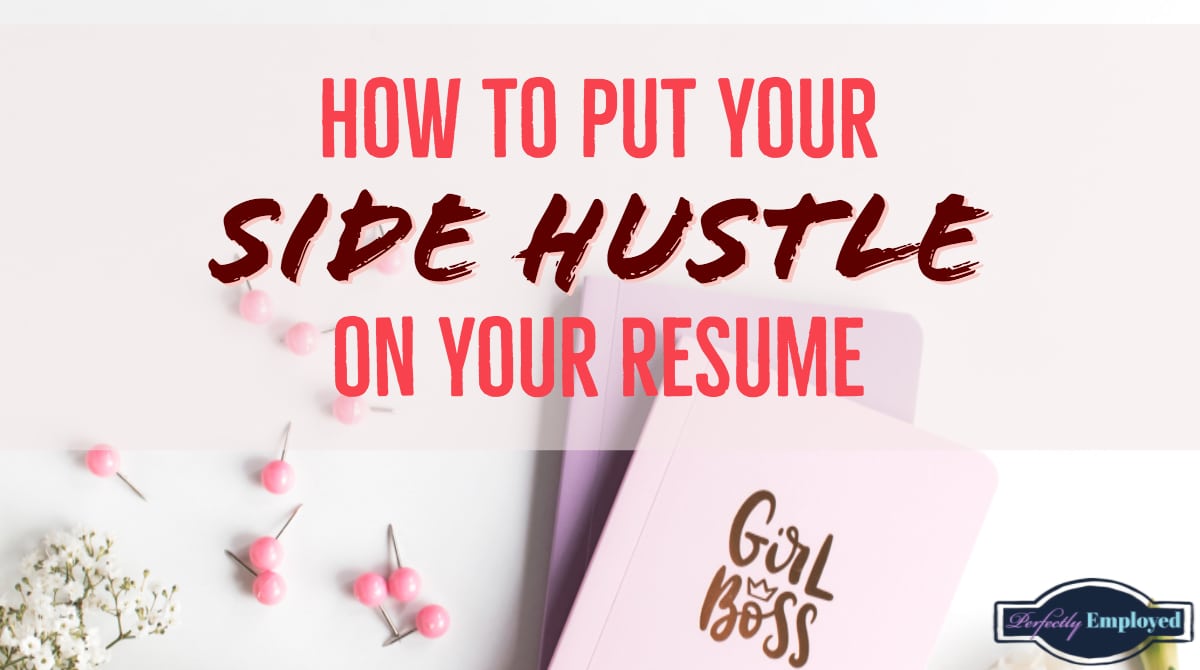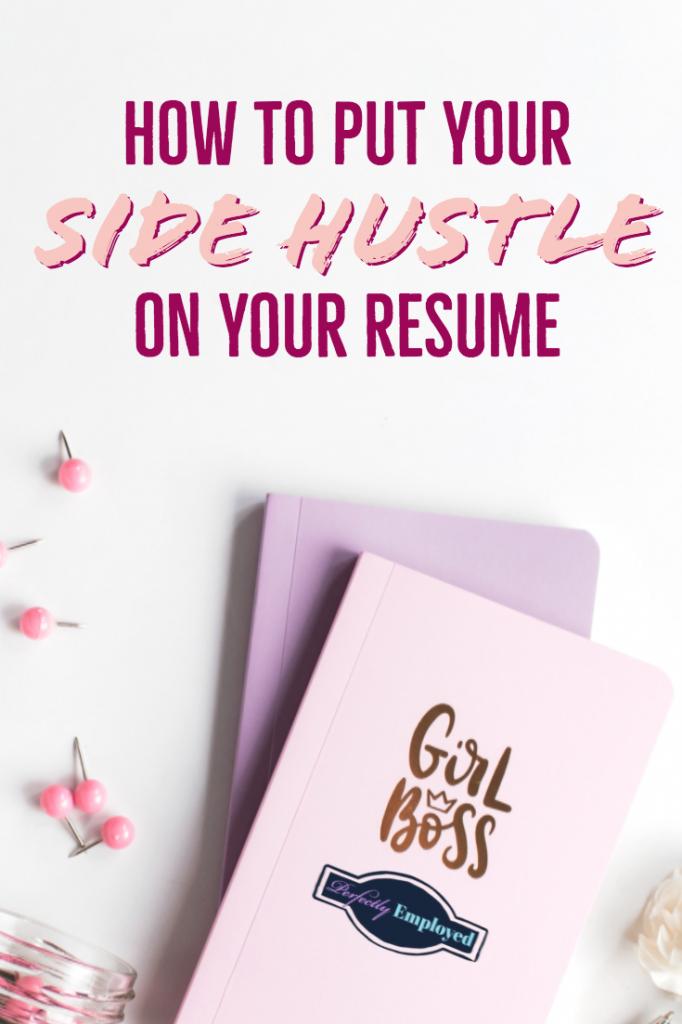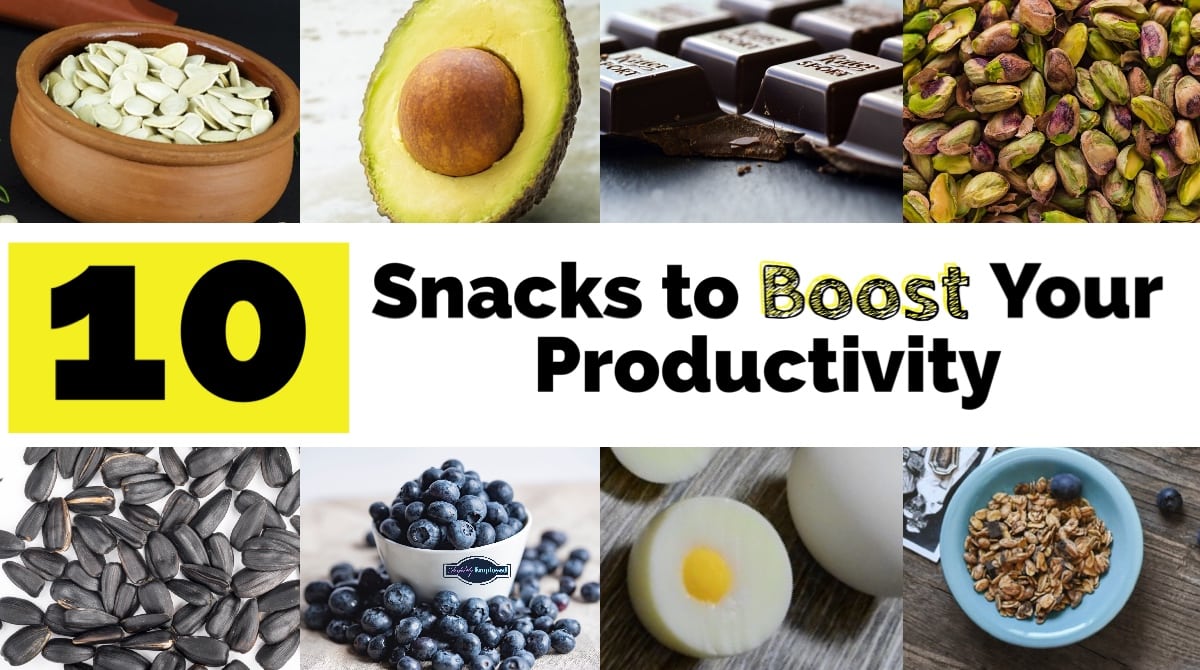
You can’t work when you’re hungry. Your brain needs fuel to keep up with your workload. If you’re snacking on donuts and potato chips in the afternoon, your productivity is probably slipping by around 1 PM.
There are better snack foods that can boost your productivity and help you reach your workday goals. Instead of grabbing junk food at the office vending machine, stock your desk and lunch bag with these brain-boosting snacks:
1. Chocolate for Enhanced Productivity

Is there any happier food in the world than chocolate? It’s rich, luxurious, and meant to be savored. Its mood-boosting properties are celebrated around the world, and happy people are often more productive.
The Huffington Post reports that “women who ate more than 45 grams of chocolate a week had a 20 percent lower risk of stroke than women who treated themselves to fewer than 9 grams,” so eat it up. It’s also reported to lower blood pressure, “bad” cholesterol, and your risk of heart disease.
Stay away from the Snickers in the vending machine. Instead, opt for good-quality dark chocolate. If dark chocolate isn’t your thing, you should try the flavorful varieties from Vosages Haut-Chocolat. My favorite is the hard-to-find Naga flavor, but the Black Salt Caramel bars and the Pink Himalayan Salt caramel bars are fantastic.
2. Pistachios

A cup of pistachios packs 25 grams of protein. Nuts.com reports that cashews have a healthy ratio of beneficial fatty acids, and contains vitamin B6, which is essential for cognitive function (you know, the cornerstone of productivity).
Buying a few pistachios at the gas station is quite pricey at around $3 for an 6-ounce bag, but you can buy a big bag at Sam’s Club for around $15 and have enough pistachios for a month or more. Most diet gurus recommend buying pistachios in their shells, but who has time for that?
3. Cashews
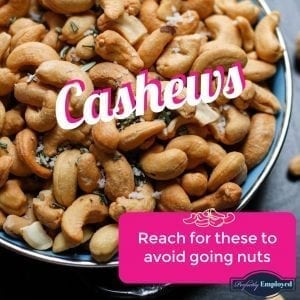
If pistachios aren’t your thing, then try cashews. As a softer nut, cashews have a lighter flavor than other varieties. A shot glass full of cashews will net you at least 5 grams of protein as well as 20% of your daily-recommended value of magnesium.
Cashews are often priced lower than pistachios. A big, 18 ounce container costs about $10 at Wal-Mart, and they stay good for a couple of months in a sealed container.
4. Sunflower Seeds

A quarter cup of sunflower seeds contains 82% of your daily recommended value of Vitamin E, so eating these will not only boost your productivity, but it will help reduce inflammation.
Sunflower seeds are rich in vitamin B1, magnesium, vitamin B6, and folate. Nutritionists like Dr. Axe consider sunflower seeds a top 10 food for their nutritional value.
I buy sunflower seeds at Trader Joe’s for around $4 a bag, and I mix them into chicken salads, use them in place of croutons on dinner salads, and feed them to the kids by the handful.
5. Boiled Eggs
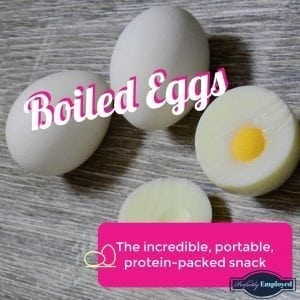
Eggs are an awesome snack food. They’re inexpensive, portable, contain 6 grams of protein each, and are packed with essential nutrients like iron, phosphorus, vitamin A, and a range of B vitamins. Recent studies show that eating eggs can help you lose weight—not that you need to lose weight, but it’s nice to know.
Boiled eggs are a big part of my “eating for productivity” plan. I buy two 18-packs of eggs every week and immediately boil one of them and set it in the fridge. When I’m running late and don’t have time for breakfast, I have eggs waiting for me. When I need an afternoon snack and the potato chips are calling my name, I peel an egg instead.
6. Avocados

Avocados are getting a bad rep lately. Most of the year, they are quite expensive, and millennials reportedly pay $19 to eat them on toast, but nutritionally, they’re a super food filled with beneficial fats, vitamins, and minerals.
Avocados can help you get over your afternoon slump. They’re rich in folate, which helps prevent “build-up of homocysteine, a substance that can impair circulation and delivery of nutrients to the brain” (medlicalnewstoday.com).
The best way to eat an avocado as a snack is with whole grain chips or crackers. Guacamole, with antioxidant-rich tomatoes and onions, increases their benefit. Use a generous amount of lime juice on your guacamole, and keep it in the fridge at work for up to four days!
7. Blueberries

Blueberries are a major memory-boosting fruit. Eat This, Not That reports that “the flavonoids in blueberries have been shown to improve spatial memory in rats. Their antioxidants help lessen inflammation.”
If blueberries aren’t in season near you, you can buy them freeze dried at Trader Joes or other health food stores. You can also find blueberry raisins, though they tend to be higher in sugar content than their freeze-dried counterparts.
8. Granola

Whole grains top the list of brain foods for most nutritionists, but making whole grains portable without adding a bunch of junk to them is tough. My daughter and I both eat gluten free due to celiac disease, which means we have to be very careful with whole grains. Luckily, we’ve been able to find gluten-free granola mixes at places like Earth-Fare and Whole Foods.
Look for a good mix that has low sugar content. We like the French vanilla almond granola you can buy in bulk at Whole Foods.
9. Almond Butter

High-protein nut butters make excellent snacks, especially when paired with fruit. One tablespoon of almond butter contains 3.4 grams of protein, 11% of your daily value of magnesium, and 3% of your daily value of iron.
Try eating almond butter as a dip for your favorite apple. It’s also good with pears.
10. Pumpkin Seeds
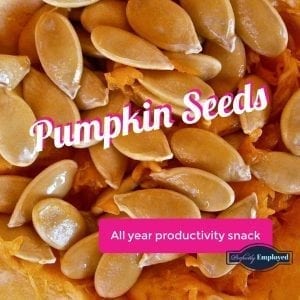
Even if you can’t order a pumpkin spice latte, you can still give your brain a boost with roasted pumpkin seeds. Dr. Mercola explains that pumpkin seeds are full of “magnesium and manganese to copper, protein and zinc, pumpkin seeds are nutritional powerhouses wrapped up in a very small package. They also contain plant compounds known as phytosterols and free-radical scavenging antioxidants, which can give your health an added boost.”
You can find pumpkin seeds in grocery stores and some convenience stores. I like to eat them in homemade trail mixes with sunflower seeds and dried cranberries.
Save on Pinterest
